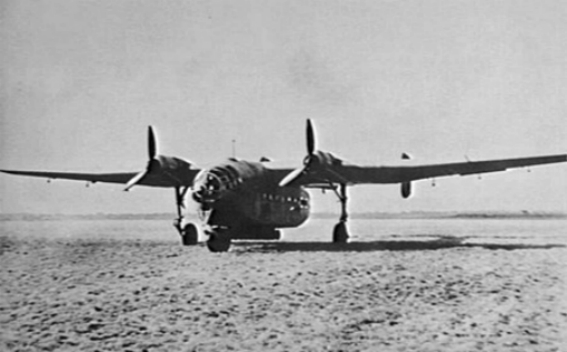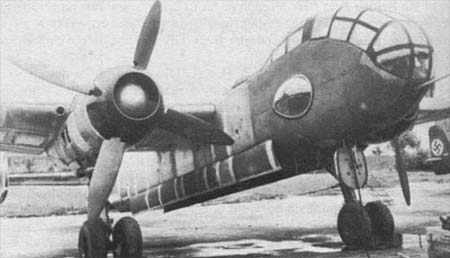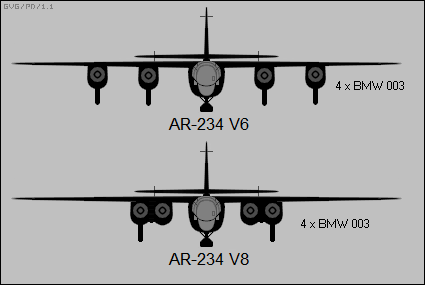|
RLM Aircraft By Manufacturer
:see List of RLM aircraft for a numerical listing :or RLM aircraft designation system for explanation of naming system. Albatros *Albatros Al 101, 'L 101', two-seat sportsplane + trainer, 1930 *Albatros Al 102, 'L 102', two-seat sportsplane + trainer, 1931 *Albatros Al 103, 'L 103', two-seat sportsplane + trainer, 1932 Arado * Arado Ar 64, fighter (biplane) *Arado Ar 65, fighter/trainer (biplane - re-engined Ar 64) *Arado Ar 66, trainer + night fighter * Arado Ar 67, fighter (biplane) (prototype) *Arado Ar 68, fighter (biplane) * Arado Ar 69, trainer (biplane) (prototypes), 1933 * Arado Ar 76, fighter (biplane) + trainer *Arado Ar 80, fighter (prototype) * Arado Ar 81, two-seat biplane (prototype)(1936) * Arado Ar 95, coastal patrol + attack (biplane seaplane) *Arado Ar 96, trainer *Arado Ar 196, ship-borne reconnaissance + coastal patrol (seaplane) *Arado Ar 197, naval fighter (biplane - derived from Ar 68) *Arado Ar 198, reconnaissance * Arado Ar 199, seaplane trainer *Arado Ar ... [...More Info...] [...Related Items...] OR: [Wikipedia] [Google] [Baidu] |
List Of RLM Aircraft
This is a list of aircraft type numbers allocated by an institution under the direction of ''Heereswaffenamt'' (before May 1933) and the Reich Air Ministry (RLM) between 1933 and 1945 for German military and civilian aircraft and in parallel to the list of German aircraft engines. See RLM aircraft designation system for an explanation of how these numbers were used. There is no single "master list" applicable all the way from 1933 to 1945 - numbers were occasionally duplicated, reallocated, or re-used. Sources differ on the allocations. Listing 0-100 101-200 201-300 301-400 401- See also * RLM numbering system for gliders and sailplanes * Japanese military aircraft designation systems The Japanese military aircraft designation systems for the Imperial period (pre-1945) had multiple designation systems for each armed service. This led to the Allies' use of code names during World War II, and these code names are still better kno ... Notes References *Heinz J. No ... [...More Info...] [...Related Items...] OR: [Wikipedia] [Google] [Baidu] |
Arado Ar 96
The Arado Ar 96 was a German single-engine, low-wing monoplane of all-metal construction, produced by Arado Flugzeugwerke. It was the ''Luftwaffe''s standard advanced trainer during World War II. Design and development Designed by Walter Blume as the result of a 1936 Reich Air Ministry tender, the prototype, powered by a 179 kW (240 hp) Argus As 10c engine, first flew in 1938. In 1939, an initial batch of Ar 96A aircraft was produced. This was followed by the major production series, the more powerful Ar 96B, fitted with the Argus As 410 engine. In 1943, Arado started development of a new derivative of the Ar 96, using non-strategic metals and wood, to be powered by a Argus As 411 MA engine. The French company SIPA was ordered to build three prototypes and 25 preseries aircraft, but the Allied invasion of France forced the Germans to shift production of the Ar 396 to Czechoslovakia.Nëel June 1977, p. 3Smith & Kay 1972, p. 54 The first Czech-built example flew on 24 ... [...More Info...] [...Related Items...] OR: [Wikipedia] [Google] [Baidu] |
Bachem
Bachem Holding AG is a Swiss technology company active in the fields of chemistry, biochemistry and pharmaceuticals. It develops products and services for the pharmaceutical and biotechnology industry and research. Bachem is specialized in the commercial production of peptides and complex organic compounds as active pharmaceutical ingredients, in the production of peptide-based biochemicals and in the development of manufacturing processes for these compounds. Founded in 1971, the company is headquartered in Bubendorf, Canton Basel-Landschaft, Switzerland. In addition to the Bubendorf site, Bachem has another large production site in Switzerland in Vionnaz in the canton of Valais. Further production sites are located in the USA in the Californian cities of Vista and Torrance and in Great Britain in St Helens near Liverpool. An additional sales and distribution site is located in Tokyo (Japan). At the end of 2018, Bachem Holding AG had 1140 employees worldwide, generated sales of C ... [...More Info...] [...Related Items...] OR: [Wikipedia] [Google] [Baidu] |
Arado Ar 532
The Arado Ar 232 ''Tausendfüßler'' (German: "Millipede"), sometimes also called '' Tatzelwurm'', was a cargo aircraft, designed and built in small numbers by the German firm Arado Flugzeugwerke during World War II. The design introduced, or brought together, almost all of the features now considered to be standard in modern cargo transport aircraft designs, including a box-like fuselage slung beneath a high wing; a rear loading ramp (that had first appeared on the December 1939-flown Junkers Ju 90 V5 fifth prototype four-engined transport via its ''Trapoklappe''); a high-mounted twin tail for easy access to the hold; and various features for operating from rough fields. Although the ''Luftwaffe'' was interested in replacing or supplementing its fleet of outdated Junkers Ju 52/3m transports, it had an abundance of types in production at the time, and did not purchase large numbers of the Ar 232. Development Even before the prototypes were complete in 1941, the Focke-Wulf Fw 190 p ... [...More Info...] [...Related Items...] OR: [Wikipedia] [Google] [Baidu] |
Arado Ar 440
The Arado Ar 240 was a German twin-engine, multi-role heavy fighter aircraft, developed for the ''Luftwaffe'' during World War II by Arado Flugzeugwerke. Its first flight was in 1940, but problems with the design hampered development, and it remained only marginally stable throughout the prototype phase. The project was eventually cancelled, with the existing airframes used for a variety of test purposes. Design and development The Ar 240 came about as the response to a 1938 request for a much more capable second-generation heavy fighter to replace the Messerschmitt Bf 110, which was becoming outdated. Both Arado and Messerschmitt responded. Messerschmitt's response, the Me 210, was a totally new design, but thanks to Messerschmitt's experience with the ''Zerstörer'' ("Destroyer") concept, it would be able to enter service quickly. Arado's design was considerably more ambitious for the smaller firm, a dream project of Arado's chief designer, Walter Blume, since the mid-1930s. ... [...More Info...] [...Related Items...] OR: [Wikipedia] [Google] [Baidu] |
Arado Ar 396
The Arado Ar 96 was a German single-engine, low-wing monoplane of all-metal construction, produced by Arado Flugzeugwerke. It was the ''Luftwaffe''s standard advanced trainer during World War II. Design and development Designed by Walter Blume as the result of a 1936 Reich Air Ministry tender, the prototype, powered by a 179 kW (240 hp) Argus As 10c engine, first flew in 1938. In 1939, an initial batch of Ar 96A aircraft was produced. This was followed by the major production series, the more powerful Ar 96B, fitted with the Argus As 410 engine. In 1943, Arado started development of a new derivative of the Ar 96, using non-strategic metals and wood, to be powered by a Argus As 411 MA engine. The French company SIPA was ordered to build three prototypes and 25 preseries aircraft, but the Allied invasion of France forced the Germans to shift production of the Ar 396 to Czechoslovakia.Nëel June 1977, p. 3Smith & Kay 1972, p. 54 The first Czech-built example flew on 24 ... [...More Info...] [...Related Items...] OR: [Wikipedia] [Google] [Baidu] |
Arado Ar 240
The Arado Ar 240 was a German twin-engine, multi-role heavy fighter aircraft, developed for the ''Luftwaffe'' during World War II by Arado Flugzeugwerke. Its first flight was in 1940, but problems with the design hampered development, and it remained only marginally stable throughout the prototype phase. The project was eventually cancelled, with the existing airframes used for a variety of test purposes. Design and development The Ar 240 came about as the response to a 1938 request for a much more capable second-generation heavy fighter to replace the Messerschmitt Bf 110, which was becoming outdated. Both Arado and Messerschmitt responded. Messerschmitt's response, the Me 210, was a totally new design, but thanks to Messerschmitt's experience with the ''Zerstörer'' ("Destroyer") concept, it would be able to enter service quickly. Arado's design was considerably more ambitious for the smaller firm, a dream project of Arado's chief designer, Walter Blume, since the mid-1930s. ... [...More Info...] [...Related Items...] OR: [Wikipedia] [Google] [Baidu] |
Arado Ar 234
The Arado Ar 234 ''Blitz'' (English: lightning) is a jet-powered bomber designed and produced by the German aircraft manufacturer Arado. It was the world's first operational turbojet-powered bomber, seeing service during the latter half of the Second World War. Development of the Ar 234 can be traced back to the latter half of 1940 and the request to tender from the Ministry of Aviation to produce a jet-powered high-speed reconnaissance aircraft. Arado was the only respondent with their ''E.370'' design. While its range was beneath that of the Ministry's specification, an initial order for two prototypes was promptly issued to the company, designated ''Ar 234''. While both of the prototypes had been mostly completed prior to the end of 1941, the Junkers Jumo 004 turbojet engines were not available prior to February 1943. Due to engine unreliability, the maiden flight of the Ar 234 V1 was delayed until 30 July 1943. In addition to the original reconnaissance-orientated ''Ar 23 ... [...More Info...] [...Related Items...] OR: [Wikipedia] [Google] [Baidu] |
Arado Ar 233
The Arado Ar 233 was a 1940s German design for a civil twin-engined amphibian flying boat, developed by Dewoitine in France under the control of Arado Flugzeugwerke.Bridgeman 1988, p. 156 Design and development The Ar 233 was a twin-engined flying-boat with room for ten passengers. It would have been powered by either two BMW 323 or BMW 801 engines. A retractable tricycle landing gear would have allowed amphibious operation. A mockup was completed by Dewoitine in German-occupied France, but the project was abandoned due to the Liberation of France The liberation of France in the Second World War was accomplished through diplomacy, politics and the combined military efforts of the Allied Powers, Free French forces in London and Africa, as well as the French Resistance. Nazi Germany inv ... in 1944. General history of the Aircraft The Arado Ar 233 was intended for civilian use only but, later on in the development process, the Germans wanted to weaponize it and make it suita ... [...More Info...] [...Related Items...] OR: [Wikipedia] [Google] [Baidu] |
Arado Ar 232
The Arado Ar 232 ''Tausendfüßler'' (German: "Millipede"), sometimes also called '' Tatzelwurm'', was a cargo aircraft, designed and built in small numbers by the German firm Arado Flugzeugwerke during World War II. The design introduced, or brought together, almost all of the features now considered to be standard in modern cargo transport aircraft designs, including a box-like fuselage slung beneath a high wing; a rear loading ramp (that had first appeared on the December 1939-flown Junkers Ju 90 V5 fifth prototype four-engined transport via its ''Trapoklappe''); a high-mounted twin tail for easy access to the hold; and various features for operating from rough fields. Although the ''Luftwaffe'' was interested in replacing or supplementing its fleet of outdated Junkers Ju 52/3m transports, it had an abundance of types in production at the time, and did not purchase large numbers of the Ar 232. Development Even before the prototypes were complete in 1941, the Focke-Wulf Fw 190 ... [...More Info...] [...Related Items...] OR: [Wikipedia] [Google] [Baidu] |
Arado Ar 231
The Arado Ar 231 was a lightweight floatplane, developed during World War II in Germany as a scout plane for submarines by Arado. The need to be stored inside the submarine necessitated compromises in design that made this single-seat seaplane of little practical use. Design and development Designed from the outset for use on U-boat " cruisers", like the Type XI B, the Ar 231 was a light parasol-wing aircraft. The aircraft was powered by a 119 kW (160 hp) Hirth HM 501 inline engine, weighed around 1,000 kg (2,200 lb), and had a 10 m (33 ft) wingspan. The design led to a simple and compact aircraft that could be fitted into a storage cylinder only 2 m (6 ft 7 in) in diameter. For ease of storage, the Ar 231's wings featured detachable sections that two operators could remove in less than six minutes. One unusual feature was an offset wing design, with the right wing root attaching to the wing's tilted center section (elevated above ... [...More Info...] [...Related Items...] OR: [Wikipedia] [Google] [Baidu] |
Arado Ar 199
The Arado Ar 199 was a floatplane aircraft, built by Arado Flugzeugwerke. It was a low-wing monoplane, designed in 1938 to be launched from a catapult and operated over water. The enclosed cockpit had two side-by-side seats for instructor and student, and a third, rear seat, for a trainee-navigator or radio operator. Two of the 5 prototypes, ''D-IFRB'' and ''D-ISBC'' did serve as trainers and were used for air-sea rescue Air-sea rescue (ASR or A/SR, also known as sea-air rescue), and aeronautical and maritime search and rescue (AMSAR) by the ICAO and International Maritime Organization, IMO, is the coordinated search and rescue (SAR) of the survivors of emergenc ... operations from Northern Norway. Specifications(Ar 199) References ;Notes ;Bibliography * {{RLM aircraft designations 1930s German military trainer aircraft Ar 199 ... [...More Info...] [...Related Items...] OR: [Wikipedia] [Google] [Baidu] |




